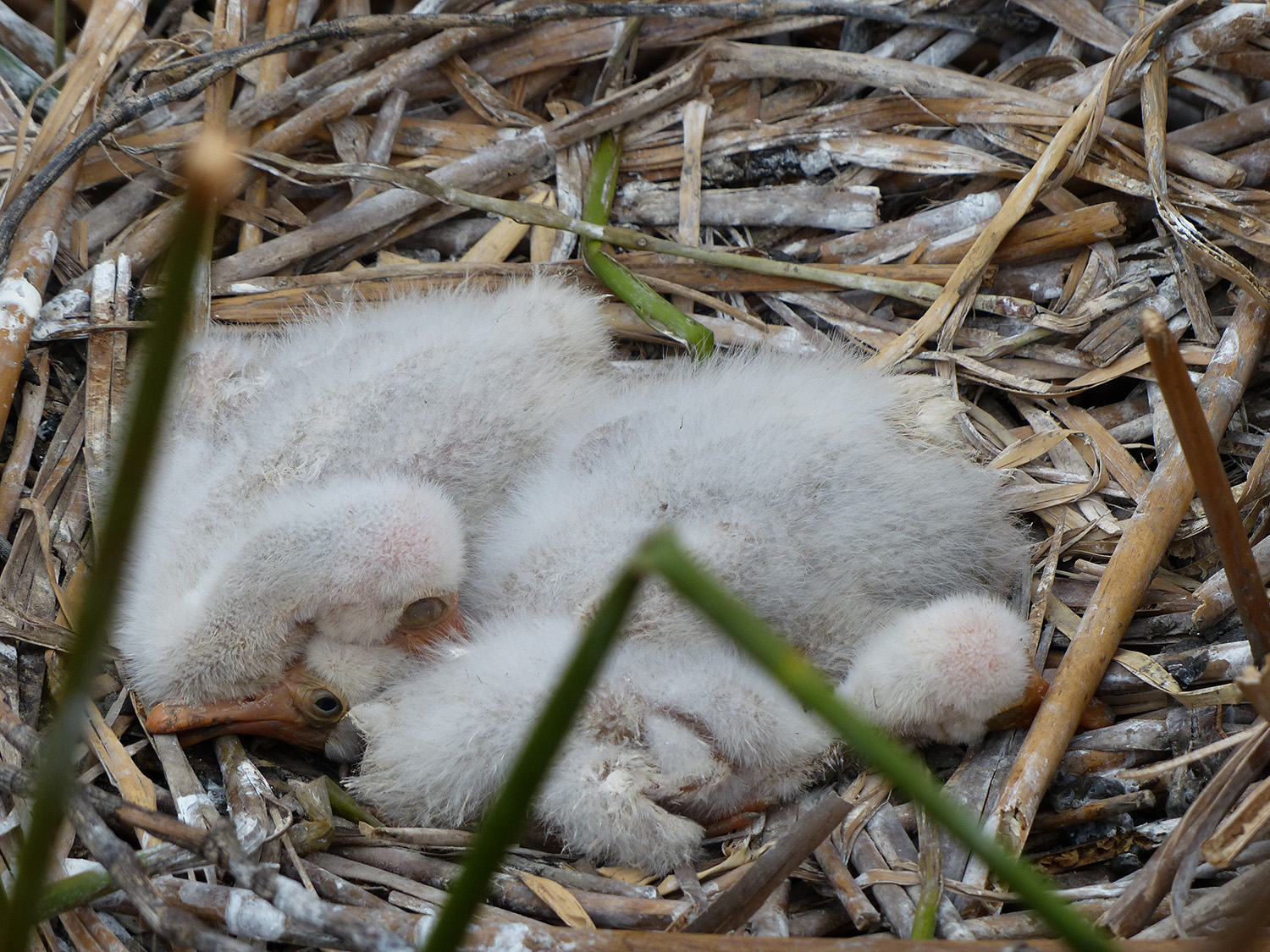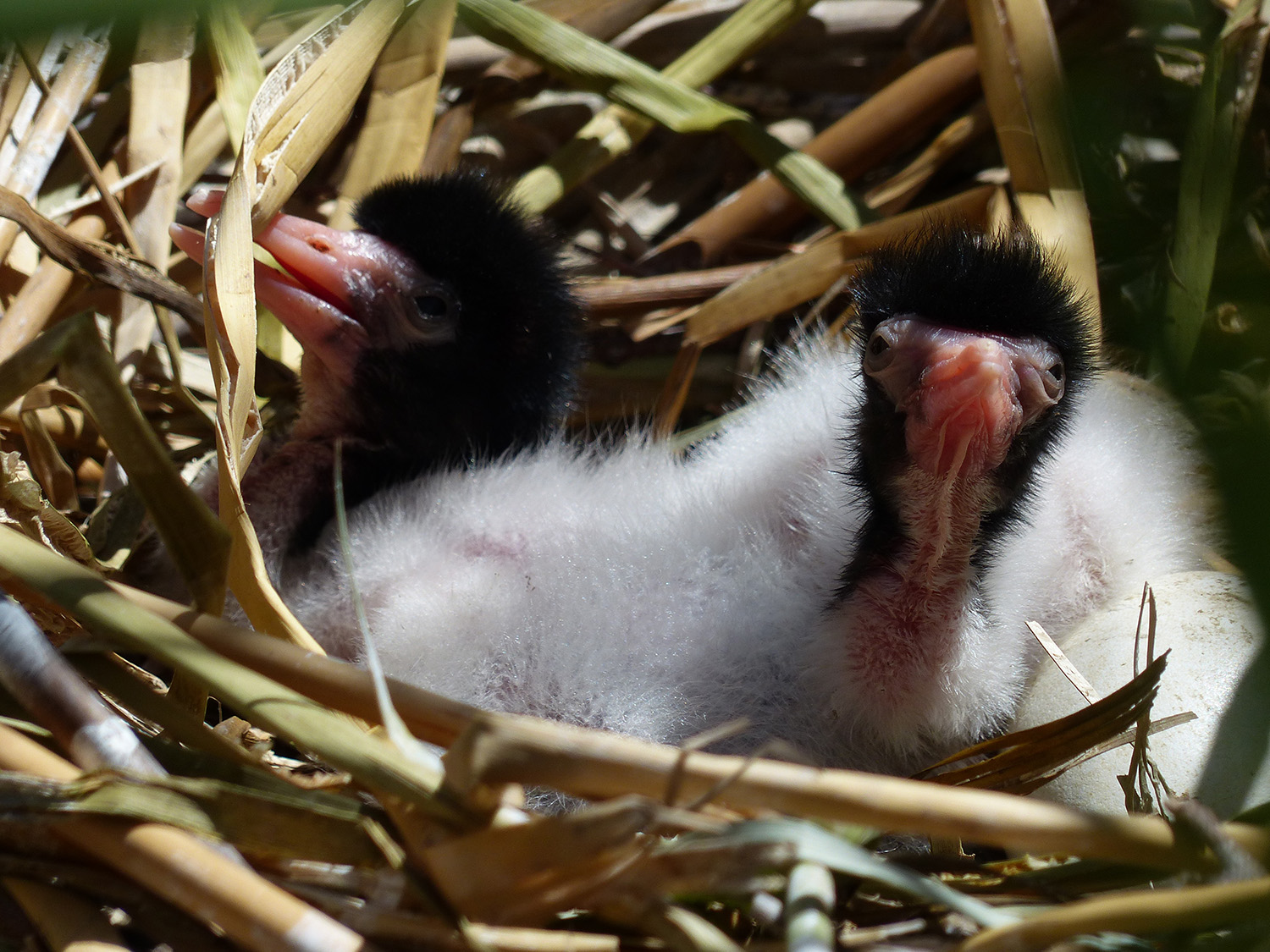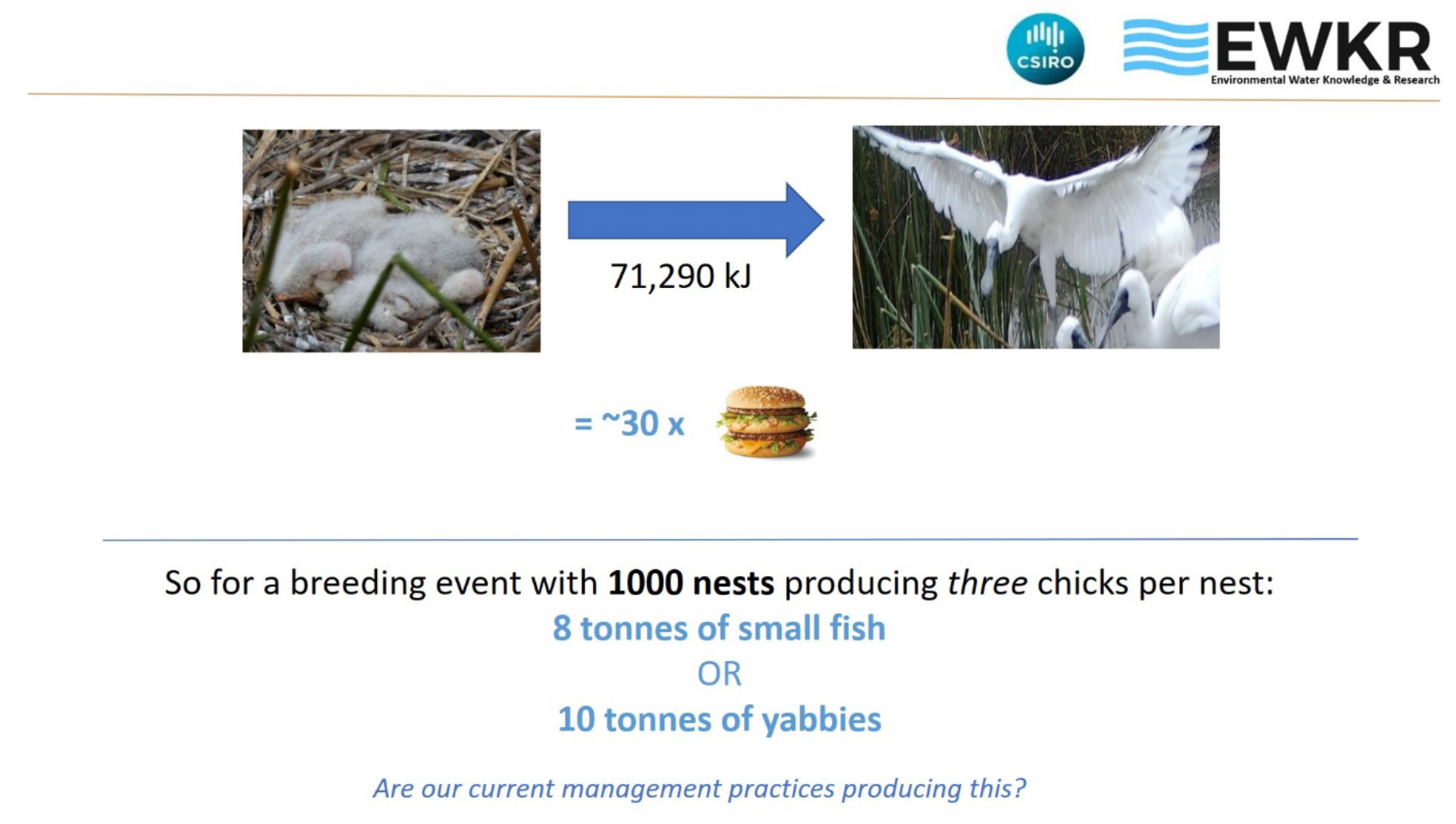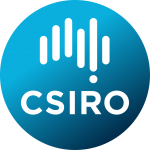*Please note: We do not recommend feeding Big Macs 🍔 to waterbirds. The comparison of ‘total energy needed’ to ‘number of Big Macs’ is purely illustrative in this article.
Author: Heather McGinness
The use of environmental water within the basin has often been focused on supporting the completion of waterbird breeding events at key colonial nesting sites. However, managers and policy-makers are becoming increasingly conscious of the need to also manage feeding sites at basin scales. Providing the right amounts of water to the right places at the right times will increase recruitment and, hopefully, elevate the long-term persistence of waterbird populations in changing climates.
We wanted to better understand the dietary requirements of colonial waterbirds and how environmental water can support these requirements to improve breeding success. The research was led by the CSIRO’s Dr Heather McGinness and focused on modelling food energy requirements i.e. ‘how much food does it take to feed a chick’. The research showed that the total energy needed to raise a single Royal Spoonbill chick from hatching to independence was 71,290 kJ and for an Australian White Ibis chick was 67,160 kJ. In human terms, this equates to at least 30 Big Macs!


The main components of Royal Spoonbill and Australian White Ibis diets are small fish, crustaceans, amphibians and invertebrates. Two of the most abundant and widespread prey items consumed by these species are the freshwater crayfish commonly known as the yabbie (Cherax destructor) and the invasive common carp (Cyprinus carpio). Using energy values for these prey species from the literature, it is possible to calculate an approximate biomass of yabbies or carp needed in nearby foraging habitats to support a specific breeding event – acknowledging that ibis and spoonbills feed their chicks a variety of prey species. For example, a small-scale breeding event of approximately 1000 nests with average clutch sizes of 2-4 eggs producing an average of three chicks per nest will require enough food to support 3000 chicks. Using the energetic model produced in this study, for an Australian white ibis or royal spoonbill breeding event of this size an estimated ten tonnes of yabbies or eight tonnes of juvenile carp would be required to support chick energy requirements from hatching to independence. In human terms, this equates to at least 92,000 Big Macs!
How much food is that?

In terms of whole-of-system wetland management, these calculations are conservative, because they do not include the food required by the nesting adults or by juveniles older than 50 days. Additionally, it is likely that adult energy needs are increased during breeding periods relative to non-breeding periods. Further research is required to quantify adult and juvenile energy needs, to refine models and predictions taking into account diet composition and variability, and to quantify food and energy availability in a range of habitats and compare it to waterbird needs.
The results emphasise the large quantity of food needed to support successful waterbird breeding and the importance of effective wetland management to support foraging habitats and waterbird food sources. Management options to promote food availability include water management interventions or actions targeted toward the reproduction, recruitment and survival of preferred prey, such as ‘environmental flows’ and aquatic refuge conservation. For example, temporally staggered watering of a series of wetlands within foraging range of the nesting site will promote successional changes in vegetation and prey populations and provide a range of foraging and prey options.
For further information:
- Waterbirds: 2019 Research Report
- Research manuscript
- contact Heather McGinness: heather.mcginness@csiro.au
- visit the CSIRO project website, or our Facebook and Twitter page
Related links:
 The EWKR Waterbird theme is led by the Commonwealth Scientific and Industrial Research Organisation (CSIRO).
The EWKR Waterbird theme is led by the Commonwealth Scientific and Industrial Research Organisation (CSIRO).
